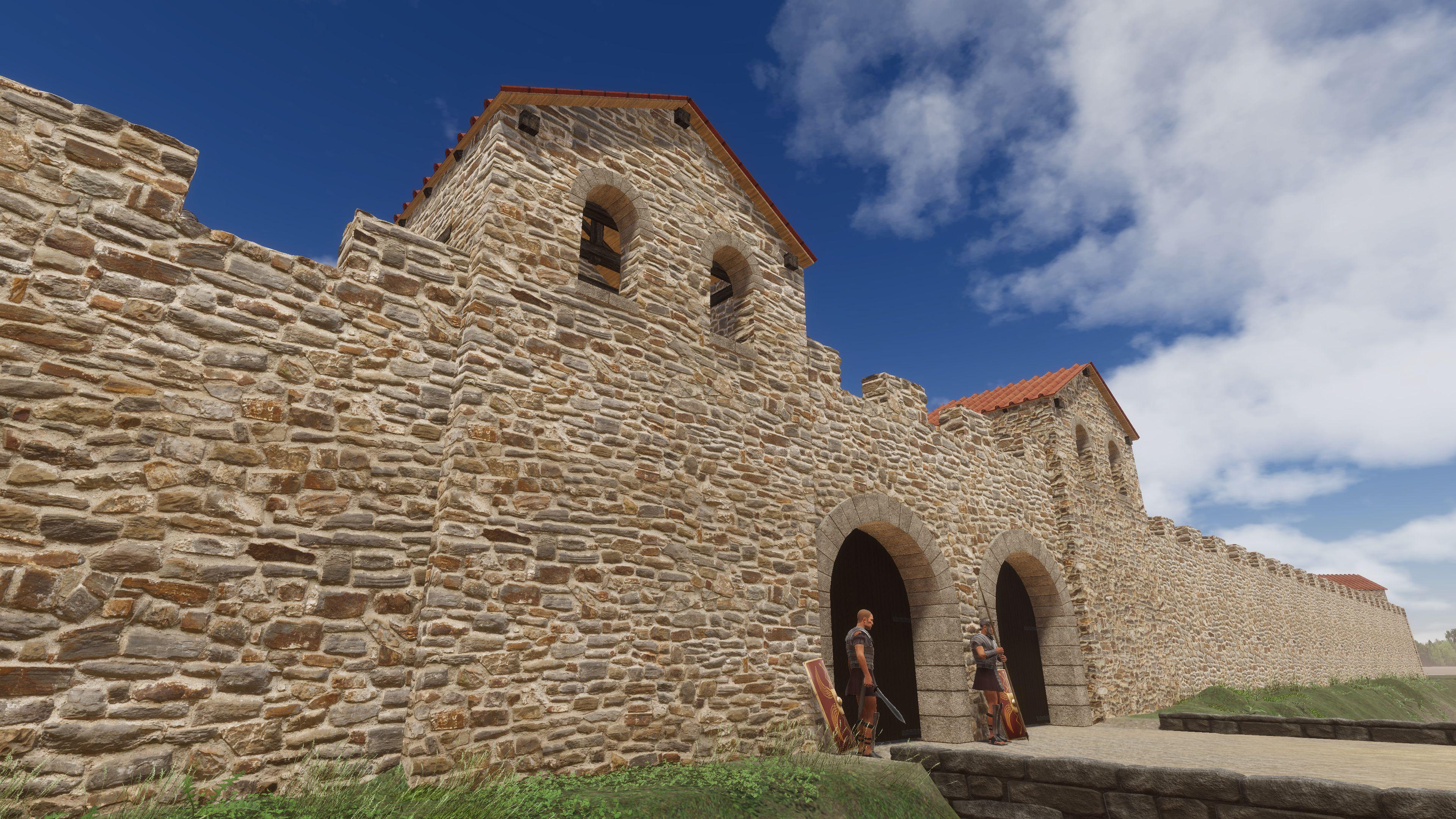Ancient Gerulata will introduce a digital layer of the permanent exhibition in the new season
24. 03. 2023

Bratislava, 24 March 2023 - Ancient Gerulata in Rusovce will open for a new season on 1 April. As part of the permanent exhibition "Gerulata on the Borders of the Roman Empire", an interactive virtual 3D model will be installed, which will illustrate the appearance of the camp and the civil settlement in the 3rd - 4th centuries CE. The 3D model will present the opportunity for a virtual walk around the camp, interesting information about the life of its inhabitants and digitised archaeological findings. The digital layers of the exhibition projects and exhibitions recently presented by the Bratislava City Museum (MMB) are a response to current global trends in the presentation of cultural heritage, including the use of digital technologies.
The Gerulata Roman camp (castle), once part of the Danube section of Limes Romanus - the protection line of the Roman Empire - is one of the most important exhibitions at the Bratislava City Museum and, since 2021, also a UNESCO World Heritage Site. As only fragments of the actual buildings have been preserved, it can be difficult to imagine what the camp looked like based on textual descriptions alone. That is why a virtual 3D model has been created to present the audience with a more complex image of Ancient Gerulata in the said period.
When designing the visualisation of the Roman military camp and the adjacent civilian settlement (vicus), the authors’ team relied on the results of archaeological excavations, which for many years also involved MMB's archaeologist and curator, PhDr. Jaroslava Schmidtová. The research also took into account knowledge of other Roman camps on the Danube section of Limes Romanus. The resulting interactive 3D model offers a walk-through mode in which visitors will be able to use a game pad to interactively explore the Gerulata premises, walk around the camp and, in some places, obtain interesting information about the daily life of the camp's inhabitants. The command centres, the principia and praetorium, the barracks, the granary, the warehouse and the hospital have been digitised to secure a smooth depiction of life in the camp. In addition, the model affords the opportunity to view in detail the most interesting archaeological finds from Gerulata, which have been digitised for this purpose.
"The virtual 3D simulation of Ancient Gerulata functions in the exhibition space as a tool that can help us visualise the use of objects that we now see only as fragments. It gives us a better idea of the possible topography of the camp within the contemporary context of the village," says Project Manager Magdaléna Kuchtová from the Museum. "I think that such an experience of visualised historical objects can arouse a deeper interest in history and stimulate us to further research into our history," she adds.
"In making the 3D reconstruction of what we now call Ancient Gerulata, we sought to achieve a balance between historical fidelity, audience appeal and technical possibilities. However, after consulting expert sources, there were still many 'white spaces'. Filling this unknown space authentically and attractively represented the biggest challenge and responsibility," says Matej Novotný, author of the 3D model and interactive application. The virtual 3D model will be presented as a large-format projection of 4.5m.
The Arts Support Fund provided the Museum with a subsidy of €20,000 and the museum's co-financing made it possible to create a unique project that renders cultural heritage accessible in an attractive and contemporary way. The MMB seeks to further develop the project and expand the model with additional functionalities and possibilities of presentation and use, e.g. in terms of education. It also plans to enhance the visitors' experience of this historically significant and attractive site.
The main project partner is the Arts Support Fund.
About the Bratislava City Museum:
The Bratislava City Museum (MMB), with more than 150 years of tradition (since 1868), is the oldest continuously active museum in Slovakia. In the context of its focus, the MMB maintains an exceptionally variegated and broadly structured collection (containing more than 120,000 items). It consists of historical, archaeological, art-historical and ethnographic artefacts that document the history of Bratislava, the functioning and development of crafts, industry, viticulture, the administration of the city or the forms of its cultural and social life.
In addition to its thematic permanent exhibitions, the museum also manages Devín Castle, the national cultural monument, which is one of the most frequently visited castles in Slovakia, and the site of Ancient Gerulata in Rusovce, listed as a UNESCO World Heritage Site in 2021 due to its significance. The collection also includes a valuable set of literary collections, which are part of the estate of Janek Jesensky.
The Bratislava City Museum is developing as a modern cultural institution, being a source of knowledge about the history of Bratislava, a place of dialogue between the past and the present, as well as the city's residents. It has a sensitive perception of its role in defining and reflecting on the identity of the city or building a space for social inclusion and leisure that will be of recurring interest to a domestic audience. The MMB aims to play an active role in the city and to communicate its contents and themes through contemporary forms of communication and programmes.